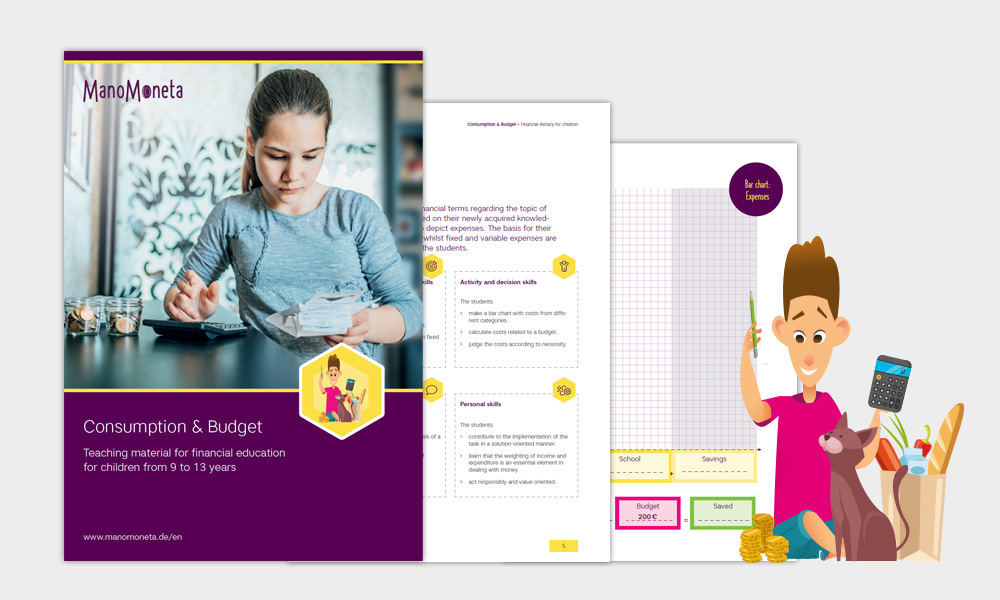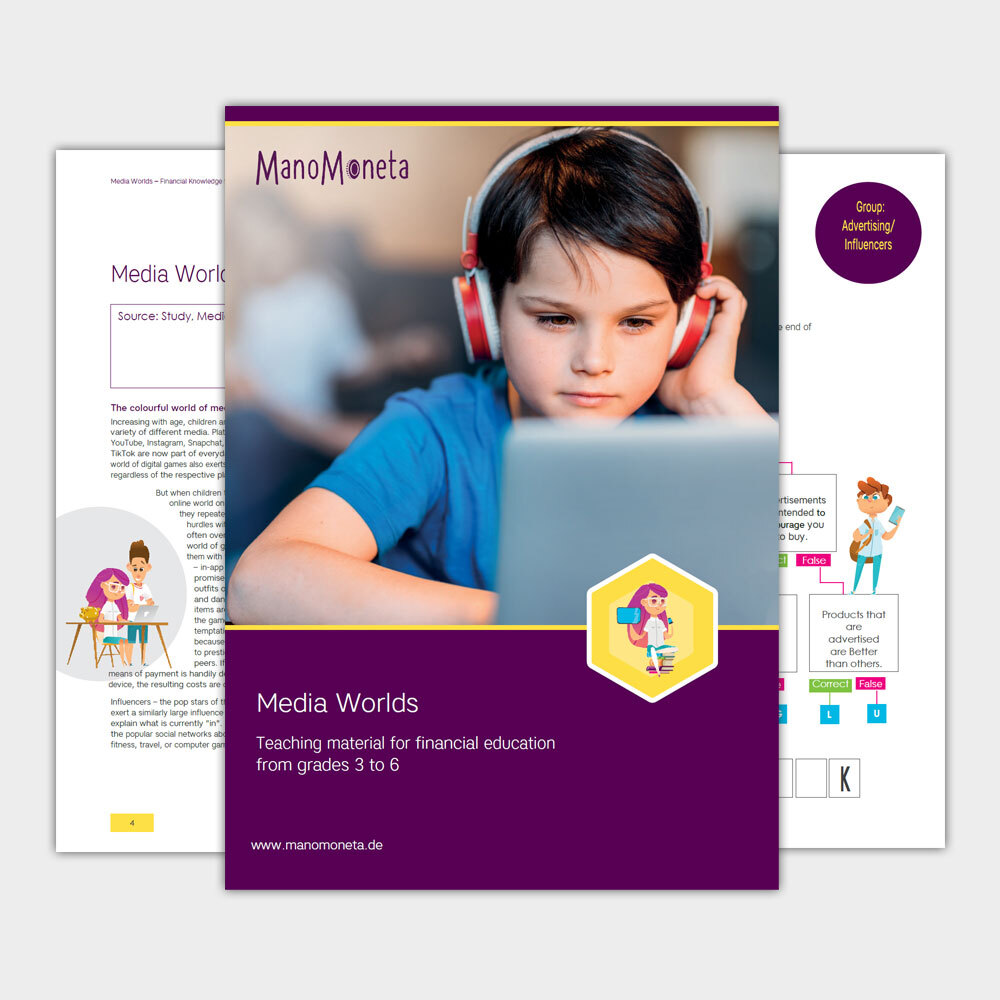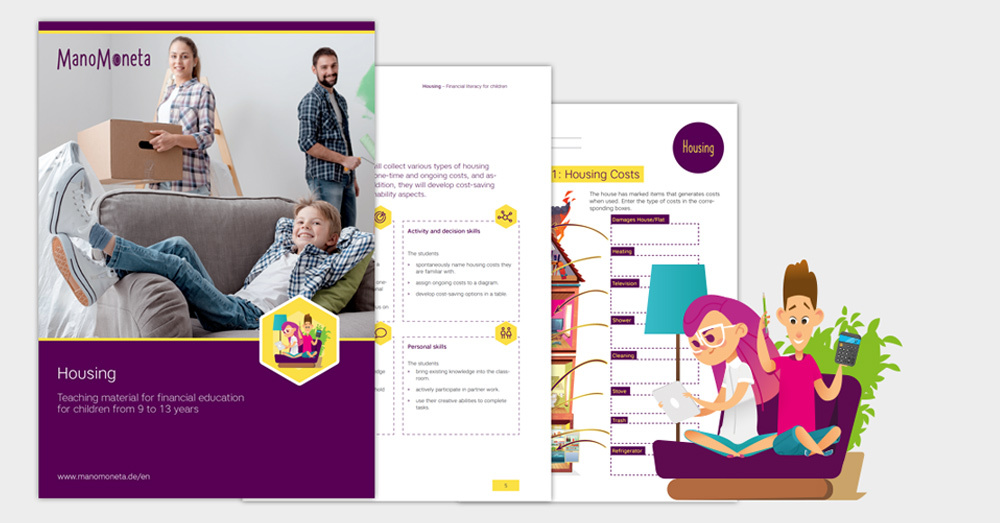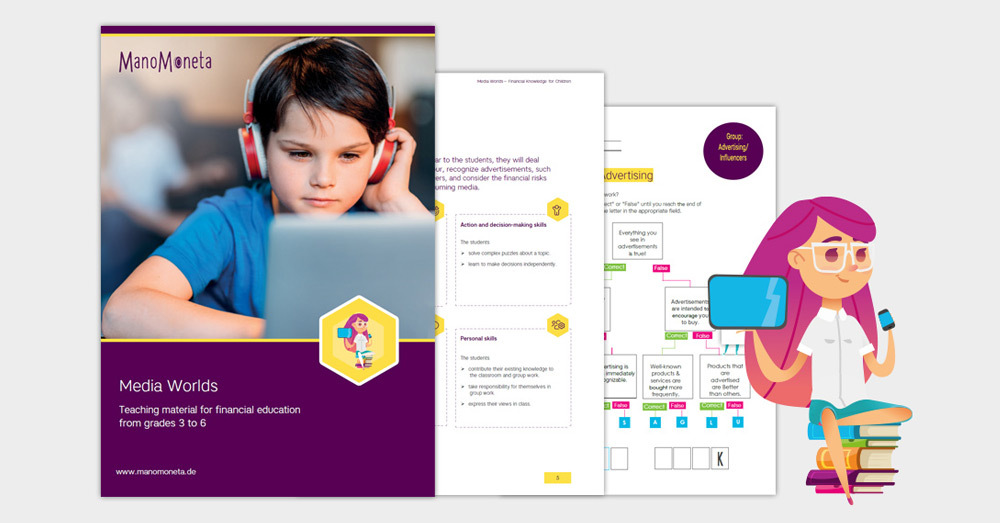Consumption & Budget
Teaching material for 90 minutes
The seemingly simple principle of income and expenditure presents a great challenge for many households, and leads to financially precarious situations time and time again. A study conducted in Europe in 2014 shows that, on average, 25 % of European households are at risk of major debt.

Using a bar chart, the students reflect and discuss everyday expenses, comparing them to a set budget. An important aspect of this task is to differentiate between wants and needs. Using cards featuring financial terms, such as bank, budget, budget plan, invoice, money, bank card, savings account and debt, the students work to acquire the necessary knowledge. The teaching concept helps students acquire basic skills to deal with the economic demands of day to day life.
The students
- brainstorm costs in everyday life.
- use a bar chart to visualize outputs.
- understand the difference between fixed and variable costs.
The students
- make a bar chart with costs from different categories
- calculate costs related to a budget.
- judge the costs according to necessity.
The students
- judge the costs according to necessity.
- respect and accept the opinions of others.
- present their results in class.
The students
- contribute to the implementation of the task in a solution-oriented manner.
- learn that the weighting of income and expenditure is an essential element in dealing with money.
- act responsibly and value oriented.
Children should be taught how to handle money in a playful way from an early age. Starting with their first pocket money the foundations for responsible spending habits can be set in place. Children should learn to understand and recognise the value of money, so they are able to decide what it is truly worth spending on. After all, not all purchases are necessary or sensible.





